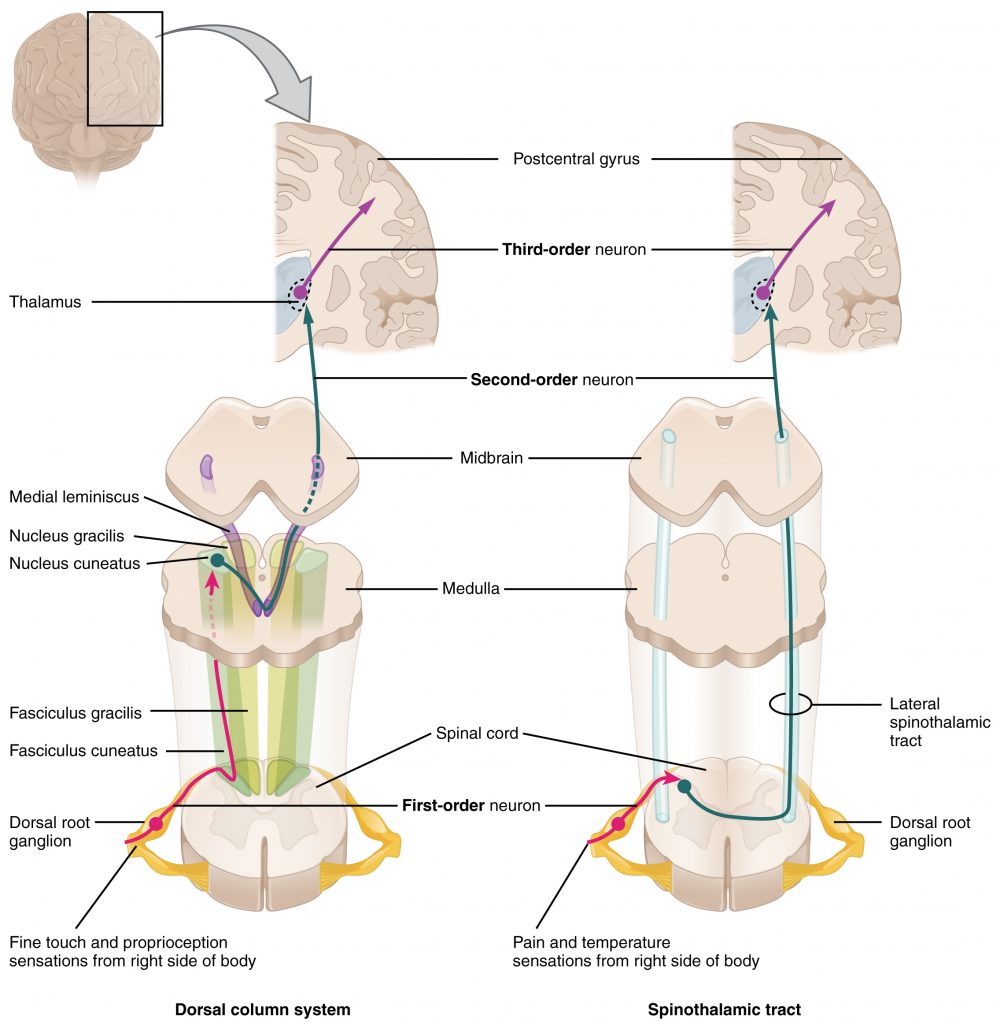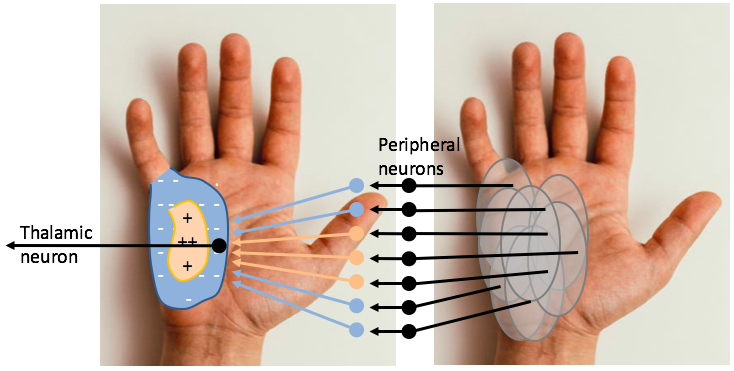Somatosensation
13 Somatosensory Pathways to the Brain
Learning Objectives
Know why the dorsal root ganglion is important to understanding somatosensation.
Know what the thalamus is.
Know what “center-surround antagonism” means and how it distinguishes thalamic receptive fields from cutaneous receptive fields.
Most cutaneous receptors are pseudo-unipolar neurons, with cell bodies in the dorsal root ganglia. The dorsal root ganglia (singular: ganglion; plural: ganglia) are lumps of nervous tissue next to the spinal cord that house the cell bodies of somatosensory neurons. For mechanoreceptors, the first synapse for information on the way to the brain is in the brainstem. After that, information crosses over to the other side of the body, makes another synapse in the thalamus, and then projects to the contralateral postcentral gyrus.

The thalamus is in the middle of the brain, at the top of the brainstem. Almost all sensory information goes to thalamus before the cortex. The thalamus likely helps regulate which stimuli or parts of our environment we pay attention to.

Center-surround receptive fields are created by addition and subtraction in the thalamus. Each neuron in the thalamus gets input from many cutaneous sensors, which have overlapping receptive fields. Because some synapses are excitatory and some are inhibitory, this convergence of inputs shapes the receptive field of the thalamic neuron (Fig.2.4.2). Having an inhibitory ring around an excitatory center makes the thalamic neurons respond very little to large stimuli, but small stimuli, which hit just the center of their receptive fields and don’t stimulate the entire inhibitory surround, elicit strong responses.
CC LICENSED CONTENT, SHARED PREVIOUSLY
Cheryl Olman PSY 3031 Detailed Outline
Provided by: University of Minnesota
Download for free at http://vision.psych.umn.edu/users/caolman/courses/PSY3031/
License of original source: CC Attribution 4.0
Adapted by: Khadija Abdi

